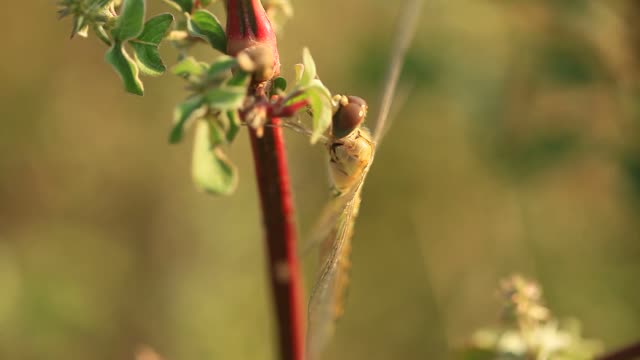Premium Only Content

Dragonfly Insect Life Cycle You Don't Know
Dragonfly species (Anisoptera) are characterized by long bodies with two narrow pairs of intricately veined, membranous wings that, while generally transparent, may have coloured markings. Unlike damselflies, the front and rear wing pairs are shaped differently.
In addition, dragonflies rest with their wings spread horizontally, rather than held vertically against each other (with the exception of one very small family, Epiophlebiidae). Dragonflies have a more powerful build and are generally much stronger fliers than damselflies.
The globe skimmer (or wandering glider, Pantala flavescens), a migratory dragonfly, for example, makes an annual multigenerational journey of some 18,000 km (about 11,200 miles); to complete the migration, individual globe skimmers fly more than 6,000 km (3,730 miles)—one of the farthest known migrations of all insect species. Dragonflies also have huge bulging eyes that occupy most of the head, giving some a field of vision approaching 360 degrees.
The winged adults are diversely coloured in a variety of shades ranging from metallic to pastel. Compared with other insects, they are large, with some having wingspans of up to 16 cm (about 6 inches). Even the smallest species are about 20 mm (0.8 inch) across. As well as being extremely agile fliers, they are also among the fastest insects. Dragonfly wing muscles must be warm to function optimally, and so, if cool, the insect often engages in wing-whirring and basking in the sun to generate heat before taking flight.
The dragonfly’s speed and agility contribute to its being one of the most effective aerial predators. Small flying insects are the usual fare, but some dragonflies regularly consume prey that is 60 percent of their own weight.
Young dragonflies, called larvae or sometimes nymphs or naiads, are aquatic and are as dedicated predators under water as the adults are in the air. The functionally wingless larvae are usually mottled or dull in colour, matching the sediments or water plants among which they live.
They have bulging eyes somewhat similar to the adults, but possess a formidable anatomical structure not present in the adult. Called the “mask,” it is a fusion of the larva’s third pair of mouthparts. Disproportionately large, the mask folds beneath both the head and thorax when it is not in use.
At the end of the mask is a set of fanglike pincers used to seize prey such as worms, crustaceans, tadpoles, and small fish. Different species of dragonfly larvae can be described as sprawlers, burrowers, hiders, or claspers. Their shape, metabolism, and respiration differ concordantly with the microhabitat they occupy.
-
 0:20
0:20
CWFell
3 years ago $0.01 earnedIf You Don't Know
24 -
 2:12:03
2:12:03
Tucker Carlson
1 hour agoMatt Walsh Responds to Demands to Disavow His Allies, and How to Resolve the Right-Wing Civil War
4.61K68 -
 LIVE
LIVE
The Jimmy Dore Show
3 hours agoJimmy Sits Down with CANDACE OWENS to Talk Charlie Kirk Investigation, TPUSA Lies, AIPAC & More!
27.9K63 -
 LIVE
LIVE
Dr Disrespect
3 hours ago🔴LIVE - DR DISRESPECT - PUBG BLACK BUDGET - FIRST LOOK GAMEPLAY
83.7K9 -
 1:01:41
1:01:41
Steven Crowder
6 hours agoA Behind the Scenes Look into a MugClub Morning - How We Torture Gerald
233K87 -
 1:17:00
1:17:00
Sean Unpaved
2 hours agoKyle Pitts Has HISTORIC Performance As Falcons SHOCK Bucs! | UNPAVED
2.96K -
 LIVE
LIVE
Rebel News
1 hour agoAnother Conservative crosses the floor, Gun grab delayed, Carney's Temu policies | Rebel Roundup
4.14K5 -
 LIVE
LIVE
LFA TV
16 hours agoLIVE & BREAKING NEWS! | FRIDAY 12/12/25
138K19 -
 1:00:47
1:00:47
VINCE
6 hours agoKristi Noem's Hearing Turns Into Full-Blown Circus | Episode 187 - 12/12/25 VINCE
204K191 -
 1:36:34
1:36:34
Benny Johnson
4 hours agoFBI Finally Charges BLM Leader ARRESTED for Fraud, Money Laundering | Ilhan Ensnared…?
62.6K114